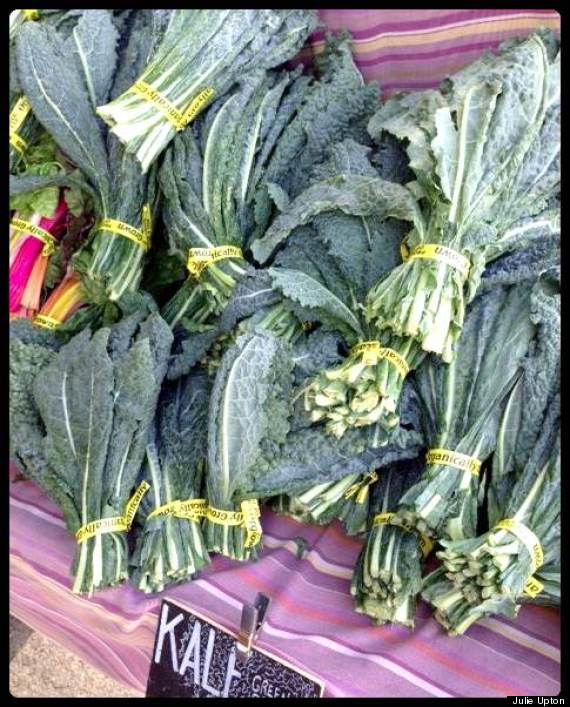Kale is the "it" health food these days. It's being featured in magazines, on restaurant menus and supermarkets are selling all sorts of new packaged kale salads. You can even find organic and gluten-free kale chips to munch on instead of potato chips!
Kale is so popular it's the undisputed "queen of greens."
Is kale a superfood for your health? Is it a must-have in your diet? Should you skip spinach and opt for kale instead? Here's the truth about the healthfulness of kale... and how it stacks up to another supergreen, spinach.

Kale Nutrition Facts
Kale comes from the brassica family, which includes arugula, cabbage, cauliflower, broccoli, Brussels sprouts and watercress, among others. According to the Linus Pauling Institute, brassica veggies contain sulfur-containing compounds that are known to provide anti-cancer properties. These bioactives are also responsible for the strong, (read: bitter) odor and flavor of brassica vegetables.
A cup of raw kale has 33 calories, 3 grams of protein and 6 grams of carbs, according to the USDA Nutrient Database. It also has 100 mg of calcium, 330 mg of potassium, 80 mg of vitamin C, 6,693 IU of vitamin A and 472 ug of vitamin K. In addition to providing essential vitamins and minerals, like all deeply colored greens kale contains phytonutrients (including polyphenols) that are known to provide health benefits.
For comparison, a cup of raw spinach has 7 calories, 1 gram of carbohydrate, 1 gram of protein, 30 mg of calcium, 167 mg of potassium, 8 mg of vitamin C, 2,815 IU of vitamin A and 145 ug of vitamin K. Spinach is also rich in antioxidant phytonutrients like kale, including lutein and zeaxanthin, which is important for eye health.
Kale is more nutrient-packed than spinach, but due to its strong flavor, many of my clients have to add a lot of high-calorie extras to eat it. Spinach is more mild and can be enjoyed without as much "doctoring" as kale.
Personally, I prefer arugula or spinach over kale for raw salads. I do use kale in wilted greens salads and in many egg dishes. However, the problem with cooking kale (or any other leafy green) is that is loses much of its beneficial antioxidant capacity. In fact, one study found that kale lost 38 percent of its total antioxidant capacity when cooked.
Bottom line
Eating more veggies is what's important for your health. Period. If you like the taste of kale, then by all means, eat it. If you don't, simply eat other veggies you do like, and try to enjoy produce from a wide variety of colors every day to get the most health benefits.
For more by Julie Upton, click here.
For more on diet and nutrition, click here.